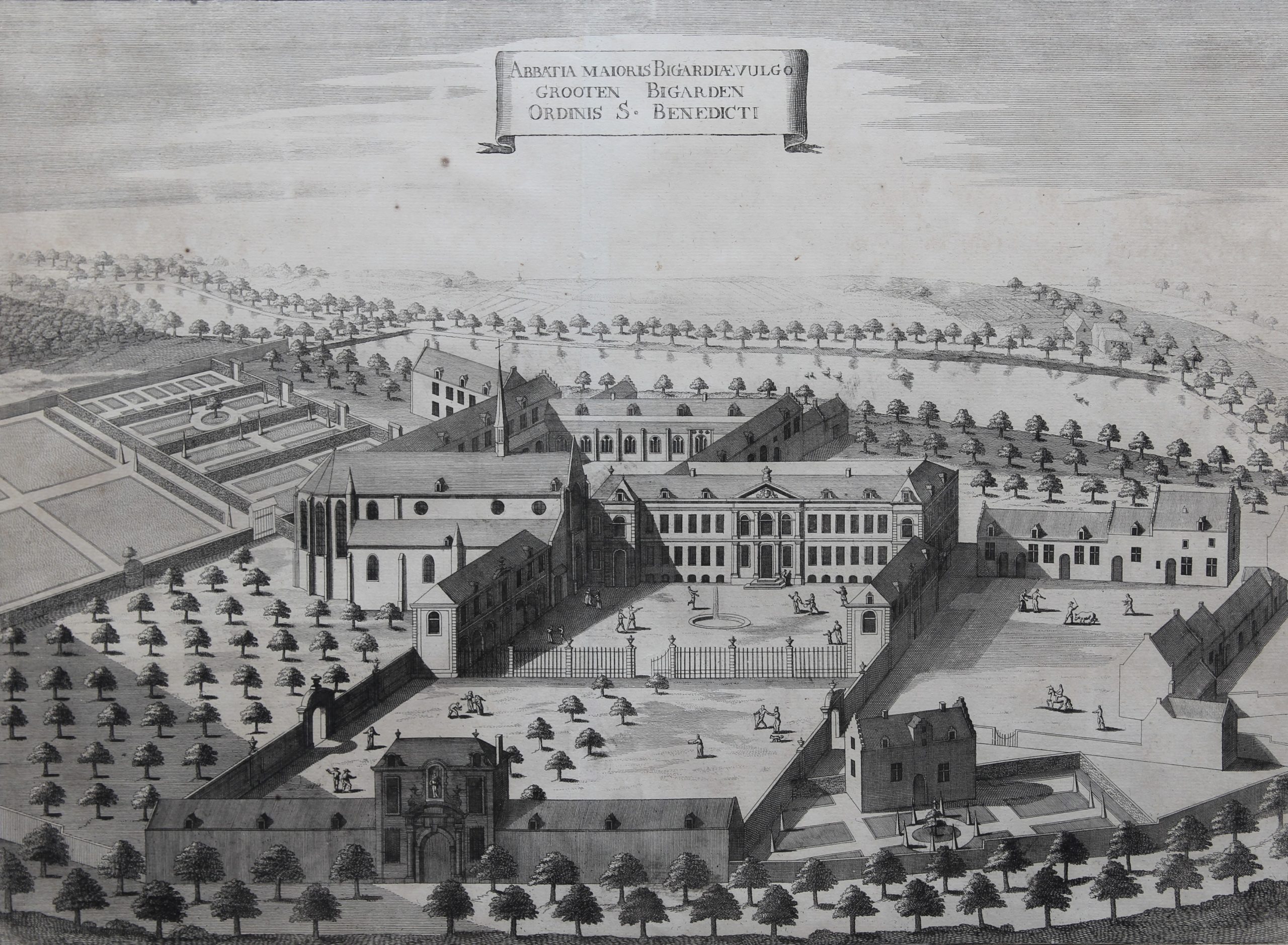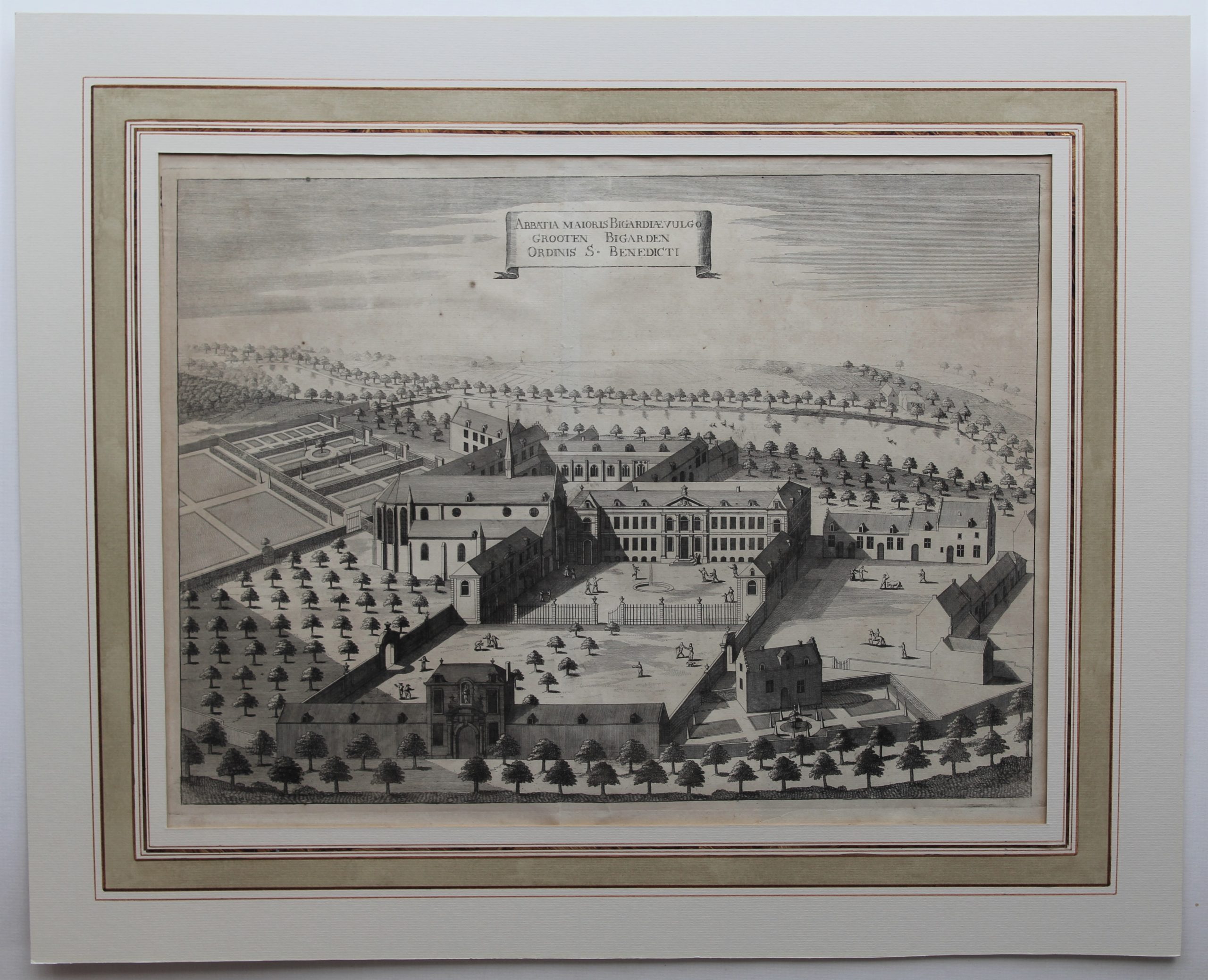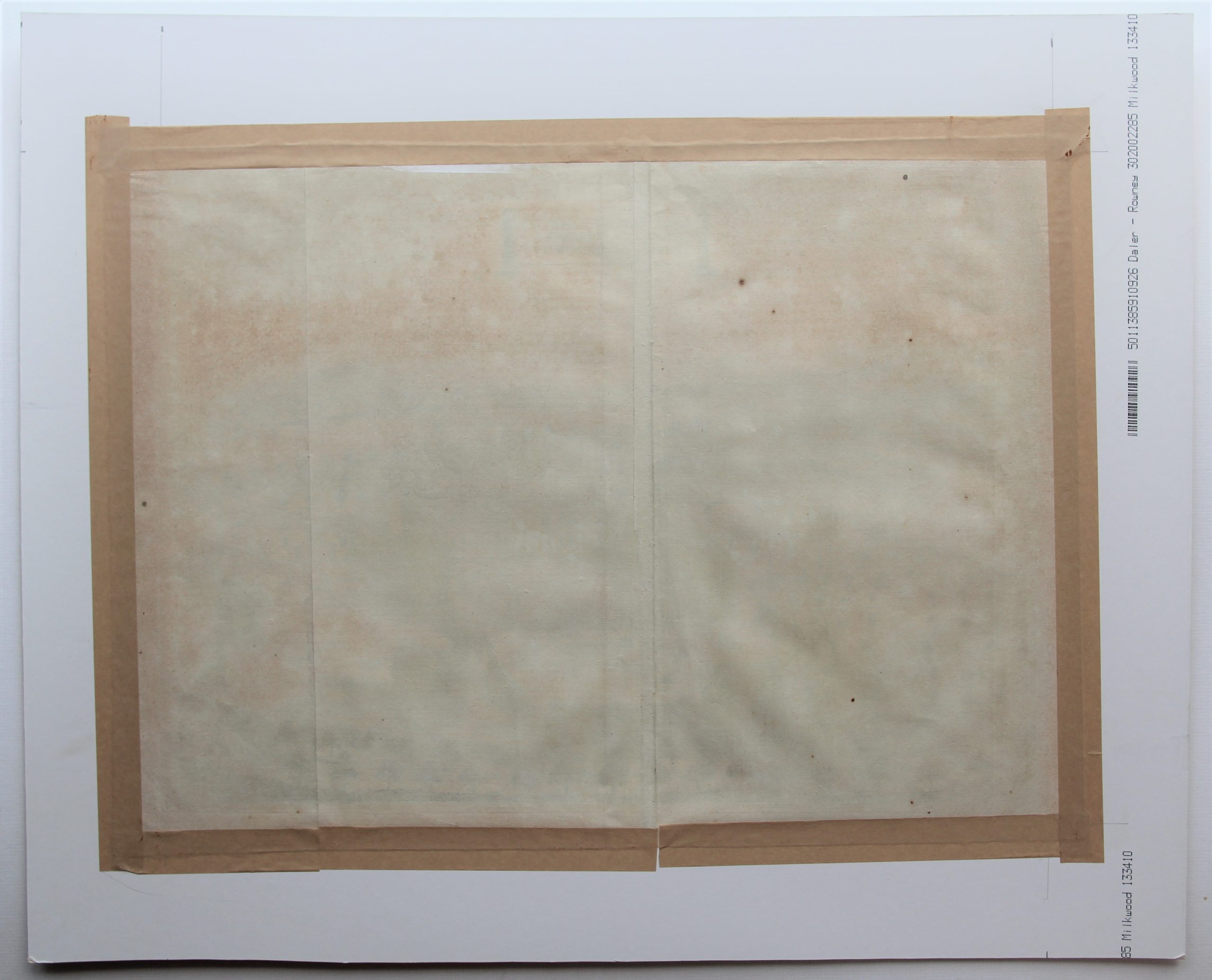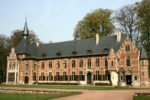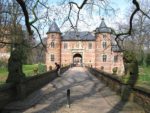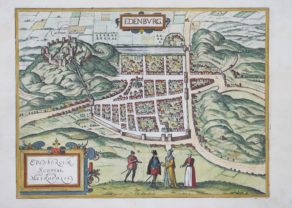Groot-Bijgaarden (Abbatia Maioris Bigardiae)
Detail
Date of first edition: 1659
Date of this map: 1659
Dimensions (not including margins): 46 x 34 cm
Dimensions (including passe-partout): 63 x 52 cm
Condition: Very good. Sharp copper engraving on strong paper. Wide margins (in passe-partout). Centre fold as published.
Condition rating: A+
From: Chorographia Sacra Brabantiae, (first published 1659), Sanderus
In stock
Groot-Bijgaarden
Saint Wivina Abbey, also known as Groot-Bijgaarden Abbey, was a Benedictine monastery in Groot-Bijgaarden. The religious community was expelled in 1796 by the French regime. The abbey church was destroyed and the rest of the buildings sold.
In the 12th century, Saint Wivina retired to a well in the forest west of Brussels, together with her friend Emwara. Other women joined them and they formed a community under the rule of St. Benedict. Thus a priory was created, which was placed under the protection of the abbey of Affligem by Godfrey I of Brabant. Successive dukes of Brabant further expanded the rights of the community. She acquired possessions in the villages in the area, but also in Flanders (Overboelare) and far into the Brabant Kempen (Beerse, Vorselaar and Wechelderzande).
Groot-Bijgaarden became detached from Affligem in 1245, but it was not until 1548 that it became a fully-fledged abbey with Kathelijne van der Straeten as abbess. In 1578, during the Dutch Revolt, the women fled to Dendermonde and later to Brussels. They did not return until 1598 to begin a full rebuild.
Most of the buildings were completely renovated in the 18th century. A French decree of 29 ventôse year V (17 March 1797) confirmed the dissolution. Between 1797 and 1802, many buildings were demolished, with the exception of the gatehouse, the priest’s house, the infirmary and the farm. The current Wivina Chapel is one of the few that remains.
Since 1996, the abbey has been recognized as a monument and the wall as a village view. The priest’s house from 1756, also known as the rentier’s house or provostdij building, is built in an elegant Louis XV style.
Related items
-
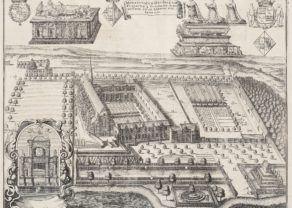
Heverlee (abbey) – Monasterium Heverlense fundatum a Guilielmo Duce de Croy et de Aerscot et. Anno 1521
by Antoon Sanderus, Renier BlokhuysenPrice (without VAT, possibly to be added): €450,00 / $499,50 / £400,50 -
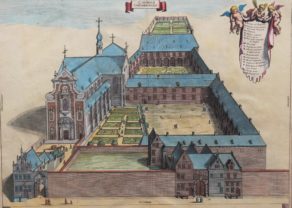
Antwerpen – Carmelus Antverpiensis
by Antoon Sanderus, Renier BlockhuyzenPrice (without VAT, possibly to be added): €300,00 / $333,00 / £267,00 -
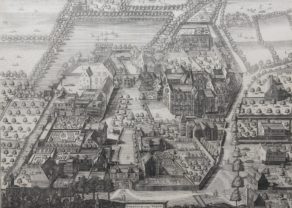
Brussels – Forestum vulgo Vorst
by Antoon SanderusPrice (without VAT, possibly to be added): €380,00 / $421,80 / £338,20 -
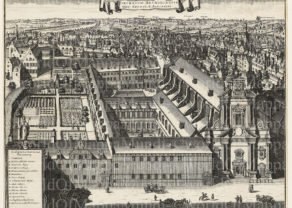
Brussels (Augustinian Convent) – Coenabium Bruxellenis Ord. Eremit. S Augustini
by Antoon Sanderus, Renier BlockhuyzenPrice (without VAT, possibly to be added): €450,00 / $499,50 / £400,50 -

Grimbergen (abbey) – Abbatia Grimbergensis celebris et Antiqua Ordinis Praemonstratensis
by Antoon Sanderus, Renier BlokhuysenPrice (without VAT, possibly to be added): €450,00 / $499,50 / £400,50An abbey and its beer
-
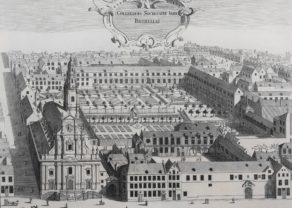
Brussels (Jesuit college)
by Antoon SanderusPrice (without VAT, possibly to be added): €450,00 / $499,50 / £400,50
